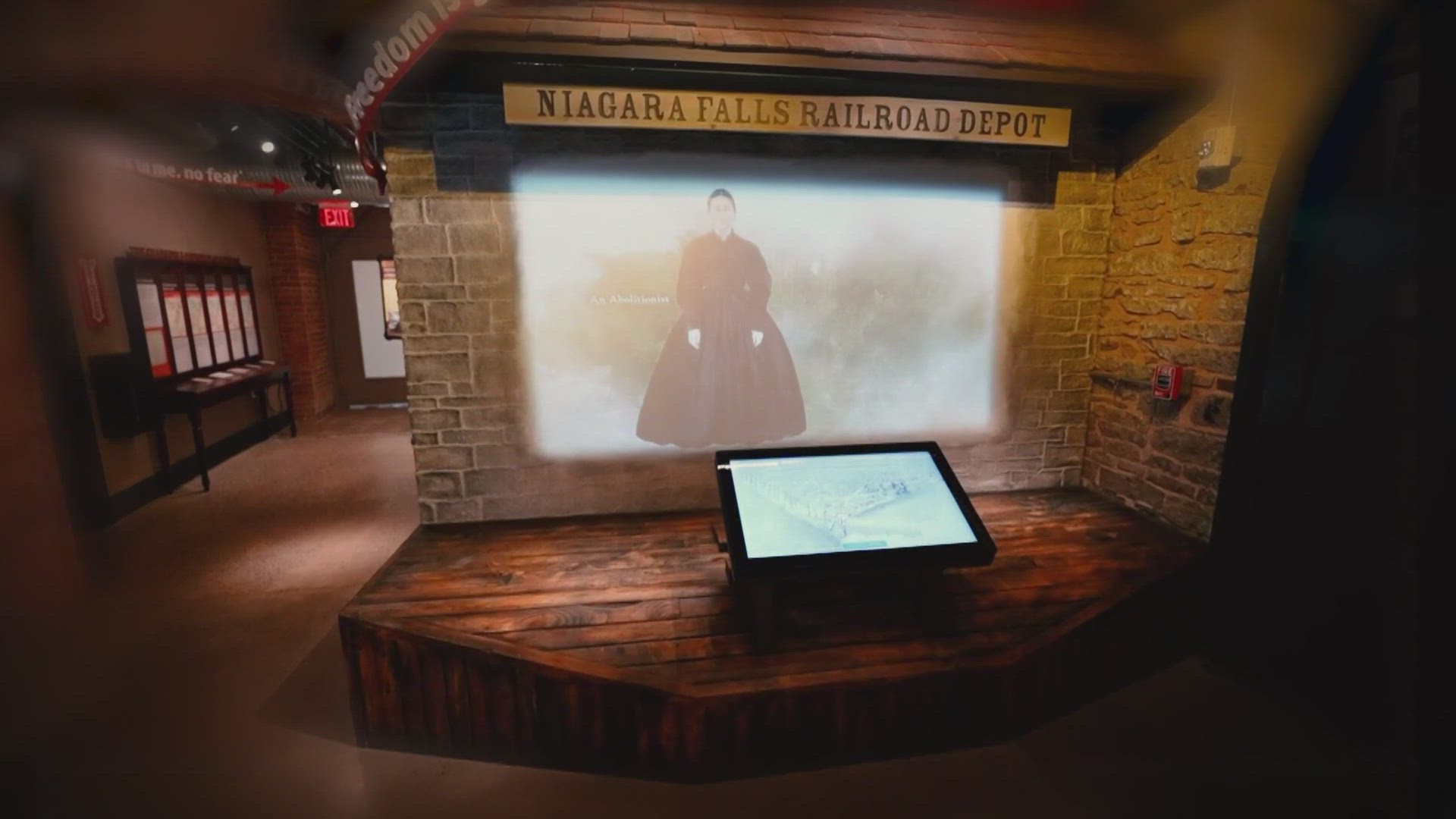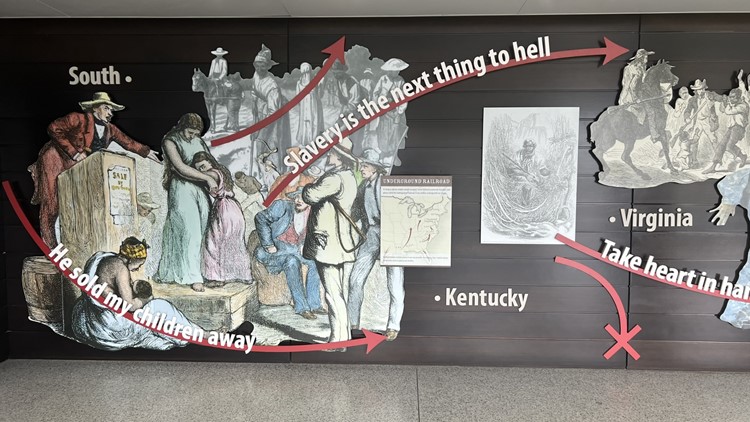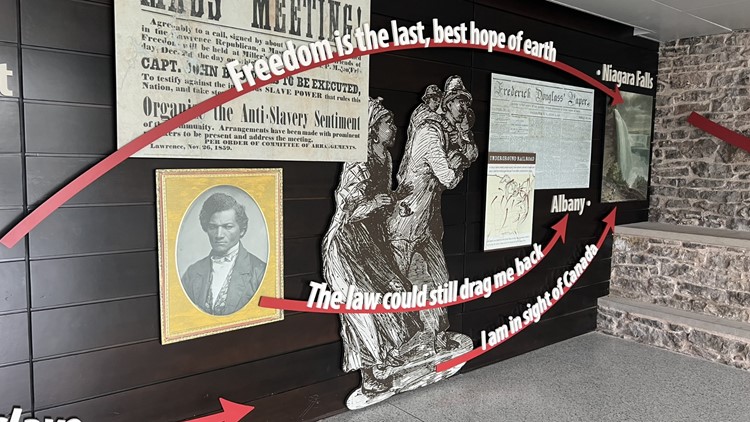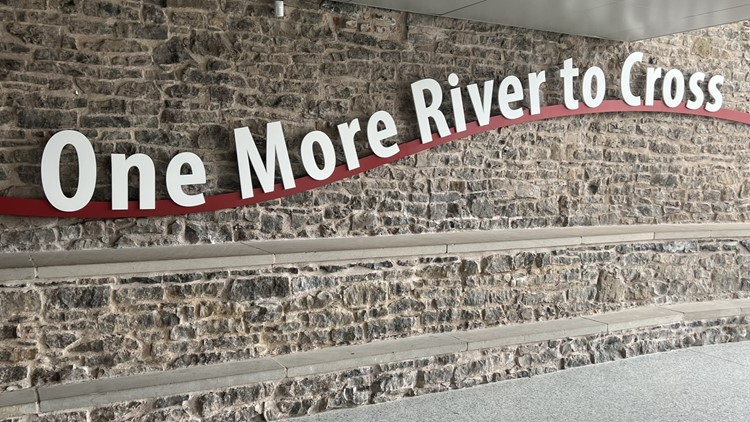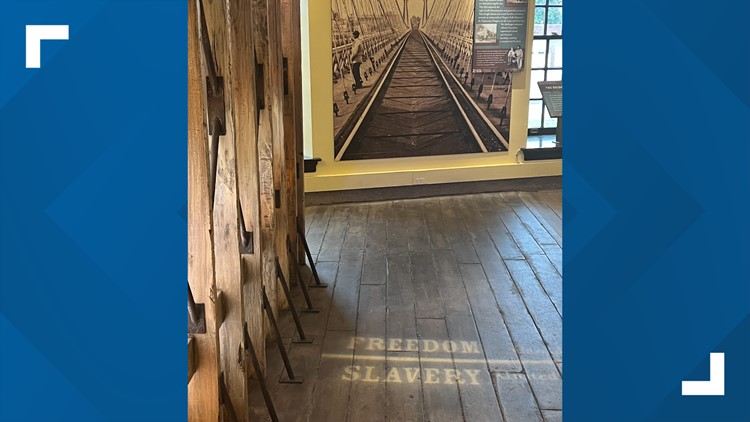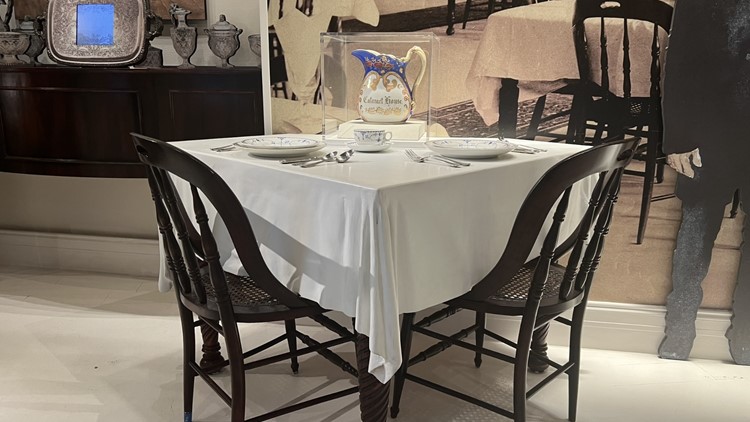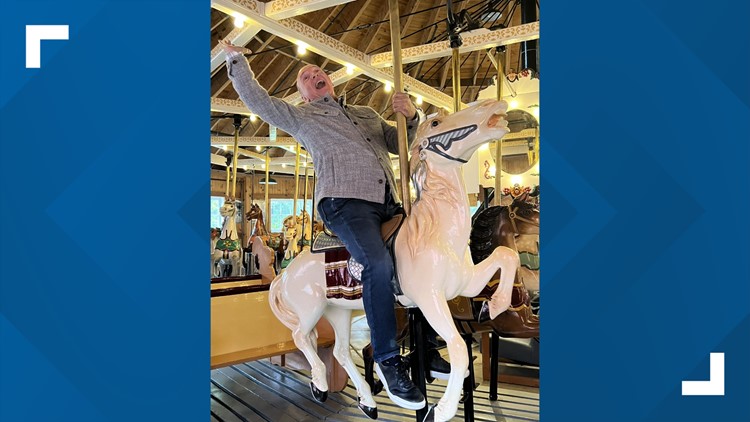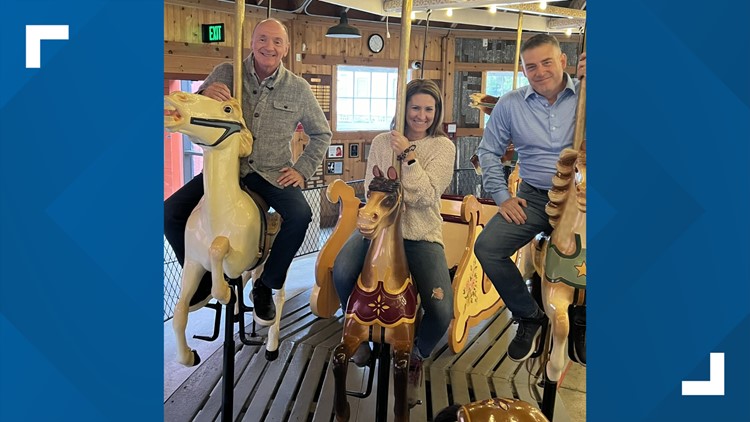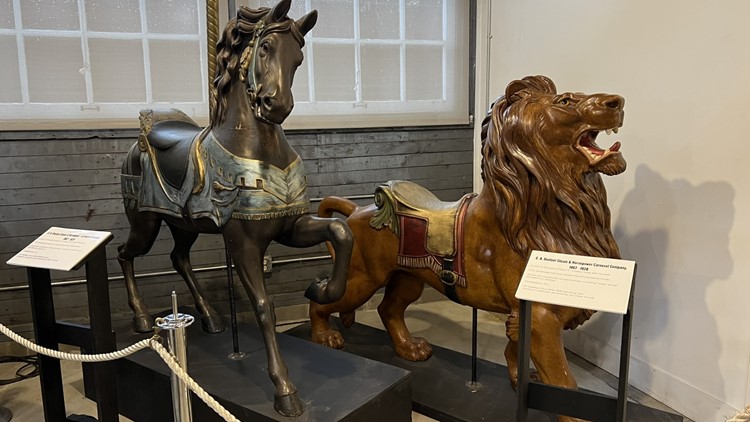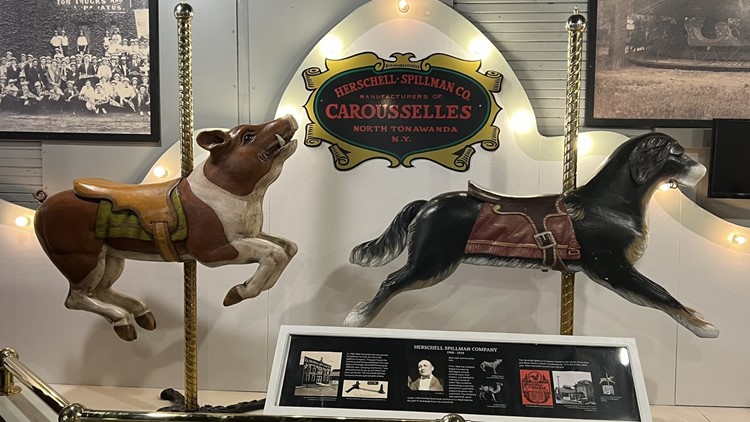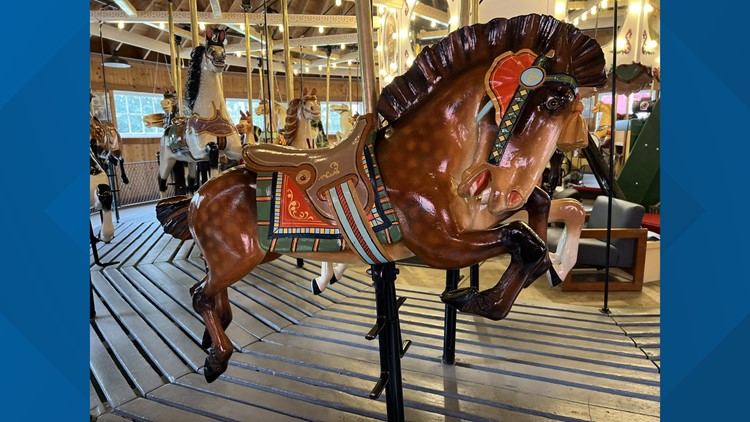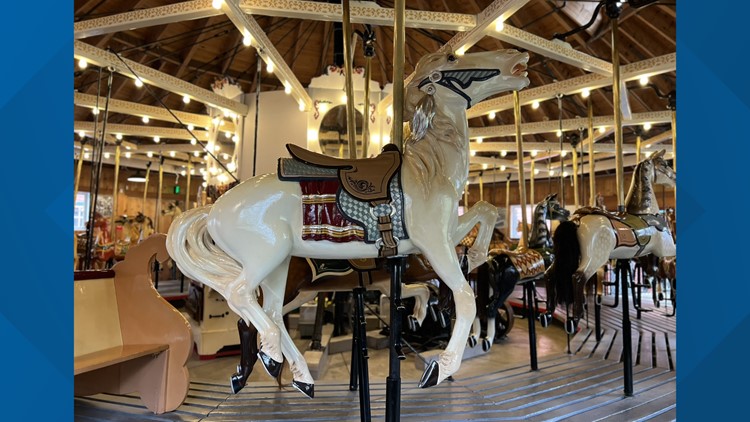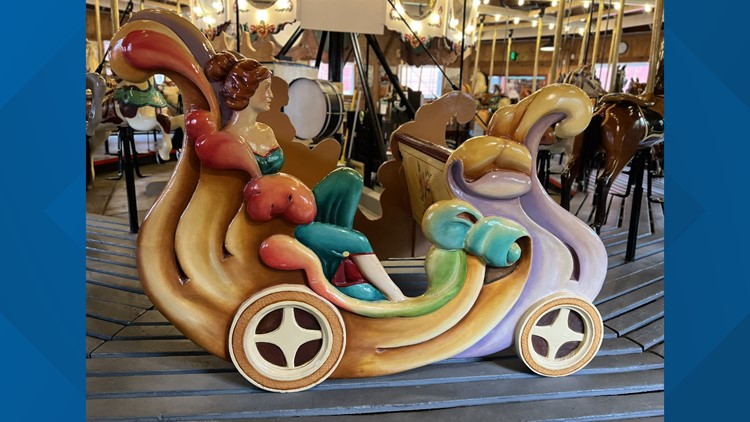NIAGARA FALLS, N.Y. — Chuck Lofton, producer Megan Simpson and photographer Steve Rhodes explored the majesty of the gorgeous natural wonder known as Niagara Falls. They also went into the neighboring communities to check out all the area has to offer.
The team explored Niagara Falls from both the U.S. side and Canadian side.
Niagara Falls Underground Railroad Heritage Center
For more than 150 years, Niagara Falls has been a tourist destination of worldwide acclaim. Few, however, may be aware that this major landmark was also a destination for enslaved people and abolitionists along the Underground Railroad.
The Niagara Falls Underground Railroad Heritage Center now occupies a building that was once a U.S. Custom House. The house was not an Underground Railroad site but looks out at the former International Suspension Bridge, where people seeking freedom would cross into Canada.
Another key site was a luxury hotel in the area. The Cataract Hotel served former slaves and, yes, slave holders. It is a place of history, not just facts and figures, but stories of people as it celebrates the bravery of the men and women who risked their lives to be free.

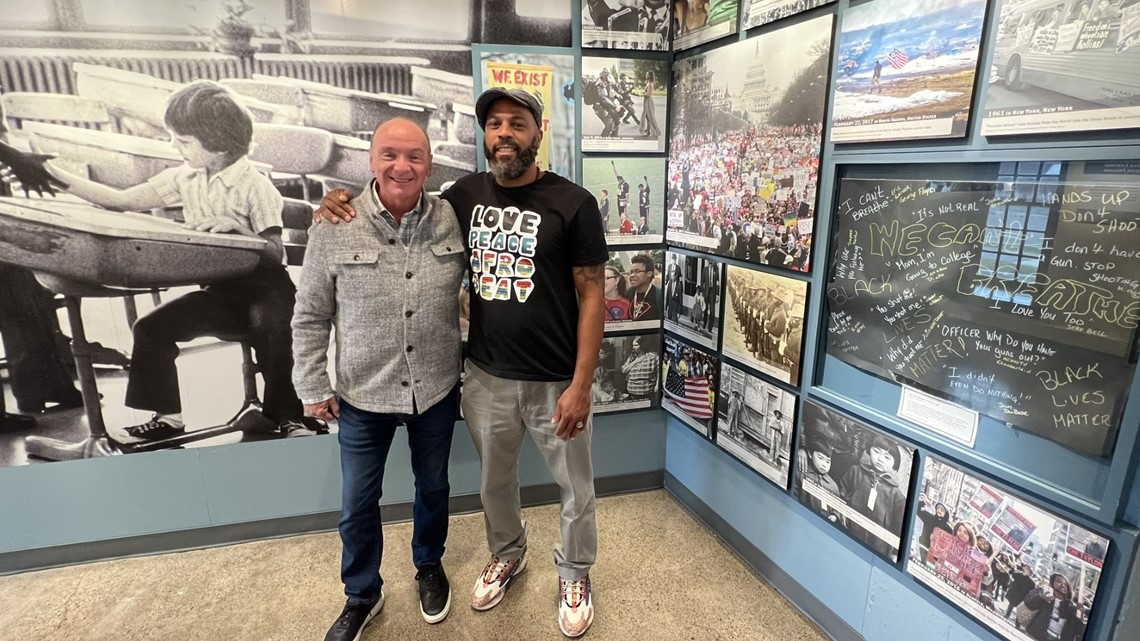
Saladin Allah, the director of community engagement for the Niagara Falls Underground Railroad Heritage Center, wants to not only tell stories of enslaved people and their struggle but also relate those stories to today's world.
"You had enslavers who would come here to stay. You got European dignitaries that would stay here. You had free people of African descent who also stayed here. If you could imagine this type of space where you had all of these various different people here, it was under those type of circumstances that freedom seekers were assisted to get across to the Canadian side through the help of the headwaiter, John Morrison," Allah said. "My family is deeply connected to the Underground Railroad. I'm the third great-grandson of the famous Underground Railroad freedom seeker, Josiah Henson. I was born here in Niagara Falls through my family, my grandmother, she was actually born over on the Canadian side of St. Catherine's, which also was a community of freedom seekers. At one point it was known as Colored Village."
Allah said his grandmother moved to the American side in 1925, but as for Henson and his family, they actually crossed about 20 miles from here on Oct. 28, 1830.
Saladin's family arrived here decades before the Civil War began, so the journey here was even more perilous.
Niagara Falls Underground Railroad Heritage Center
The Heritage Center staff has researched for years to present the stories told here. Guests have a real interactive experience with videos, interactive displays and even a look at the place the legendary Harriet Tubman crossed into Canada in 1856. You can also visit the dining room of the famous hotel where plans were concocted to free enslaved people on the run.
The stories aren't told to visitors, rather, they are part of a conversation that may even include the plight of recent immigrants to the States and how they must feel as families seeking freedom.
For Saladin, the years of work to open and operate the Niagara Falls Underground Railroad Heritage Center are part of his quest to make the world a better place for new generations.
"It's very difficult to be able to tell stories that are so wrapped in trauma. But the beauty of this city and being in this location is that a lot of the stories that we share are actually stories of hope, inspiration, empowerment and education," Allah said. "We want people to leave our space, not just knowing about the past and some of those events, but also to think about how they can be a part of this everyday network of freedom that we still need today."
The Niagara Falls Underground Railroad Heritage Center does much more than show exhibits in the building. Their outreach program reaches thousands every year, including many New York state school children.
A trip to Niagara Falls can be mind-blowing with the power and majesty of waterfalls, but adding the center to your trip may be inspirational. It's a thought-provoking place that focuses on freedom and challenges us to never lose sight of that basic human right.
Herschell Carrousel Factory Museum
Close your eyes.
Hear the music.
Remember your childhood, and as you open your eyes, gaze at a wonderful expression of kid-friendly joy.
The Herschell Carrousel Factory Museum is a don't-miss, stay-for-hours kind of place that is just a few miles away from Niagara Falls but brings guests back more than 100 years when these finely-crafted attractions were a big part of American life.
The museum is on the grounds of the old Herschell company, a business that for years was THE name in these types of attractions. If you have ridden on a carrousel horse, odds are it was made here.
Herschell Carrousel Factory Museum
Ian Seppala, the museum's executive director, said that more than 100 years ago, these playful horses weren't a child's ride at all, but were more a thrill ride for adults.
"It was mostly adults riding these things. So now, we've turned the speed down. It's still quite quick for some, which we're going to show you in a little while. But it does actually set up really nicely for the speed here. So, it's a good fast speed, but not too fast so we can all hold on," Seppala said.
Oddly enough, parents later felt their children were safe on the ponies, but why?
"Because of the speed, because of the safety precautions of holding on tightly because they've been happening for a while," Seppala said. "By the time that kids are riding, these carousels have been in the American society for 50 years. So now, it's an old hat, something that you've seen quite often, and they're much more comfortable with compared to early on."


Tour the grounds and you see several examples of the flashing lights, unique carnival music and the handcrafted horses, an example of early 20th century carving excellence. The men who made these horses didn't consider themselves artists, but their work tells a different story. Doug Bathke is an expert carver in his own right and shows visitors the skill needed to make these beautiful horses.
"In reality, it was done piecemeal. If you were a beginning carver or an apprentice, you would do strictly legs, and even if you improved your skills, you may stay in the leg department for quite a while. They were constantly training new workers at that area. You had to do six legs in one day," Bathke said. "If you advanced out of the apprenticeship into a journeyman, you were then given a blank body to work with, you'd have to put all the markings on with pencil for what you were going to carve. Then, you'd carve the blank at the saddle, all the trimmings and stuff, and you had to do one body and a half of a second body every day, minimum. The master carver would get blanks for the heads and necks. Carve those and then blend all the other parts as he put the horse together or the animal together, depending on what they were carving. And then, it would be shipped off to the paint shop. So, by doing that in piecemeal work, they averaged a horse and a half per man per day."
At that rate, the company could build a large 36-horse carrousel in just a week, ship it out and start on another order.

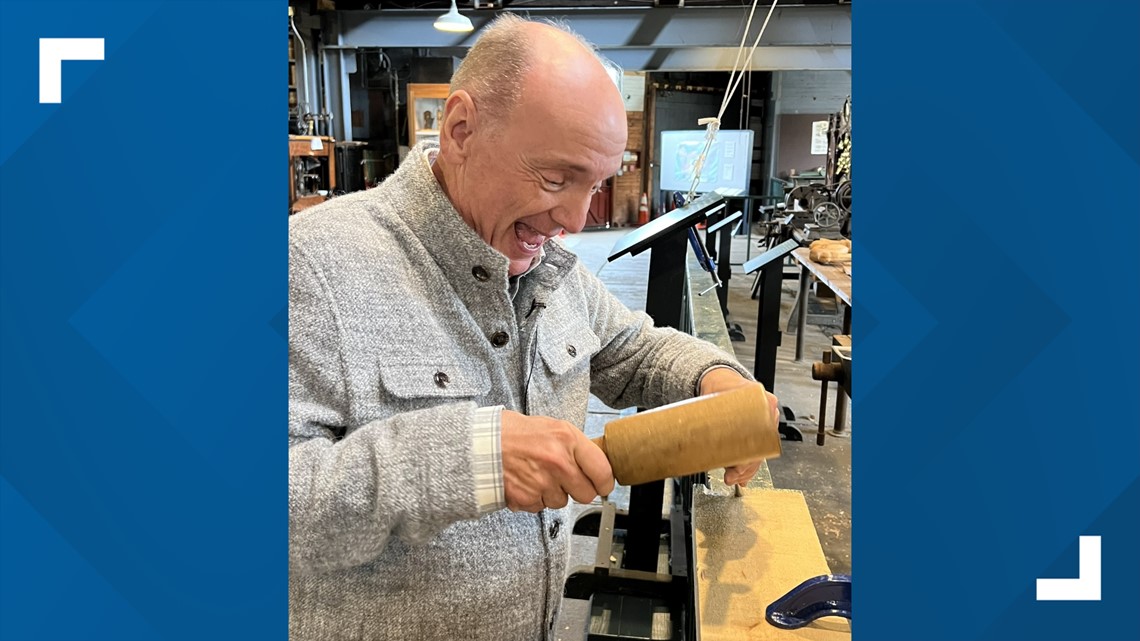
Amongst the memories and the music, the lights and the horses are different kinds of attractions. The company also made carnival rides as a revenue stream and found that young lovers especially enjoyed a ride called the Spinning Tub.
"Historically, when you went on a date, it was supervised. You weren't allowed to have any physical touch, but when you were in the Spinning Tub or 'Lover's Tub,' as they started to call it, because as it spins, you get closer and closer and closer until you have that physical contact with the lover that you are meeting with on that date," Seppala said. "That gives you your 3 minutes until you get in trouble at least. So, we are featuring that. It is like a teacup on a carrousel. It fully spins as the whole carrousel spins. Not for the faint of heart, but it is a favored piece here on our carousel."
The first carrousel was shipped out of this building in 1916, but for the past 40 years, a single-minded committee has kept the dream of the museum alive featuring not just the well-known carved ponies, but also the other carnival rides and even the collection of Wurlitzer Music Rolls for the old time band organs. Those rolls are still produced today.
There are still Herschell attractions in Indiana, especially at Indiana Beach and Holiday World, as well the 1920 Herschell carrousel in Noblesville's Forest Park.
This museum attracts all ages, from senior citizens reliving their childhood memories to kids of today forsaking video games for a trip back in time.
Take a visit, close your eyes and when you open them, hear the music and reminisce about one of our childhood’s great thrills.
More of Chuck's Big Adventure to Niagara Falls:
- Chuck's Big Adventure to Niagara Falls: Maid of the Mist, helicopter tours and ziplining
- Chuck's Big Adventure to Niagara Falls: Old Fort Niagara and Clifton Hill
- Chuck's Big Adventure to Niagara Falls: Maple syrup and the US vs Canadian side
- Chuck's Big Adventure to Niagara Falls: Whirlpool Aero Car and Jet Boat Tours

